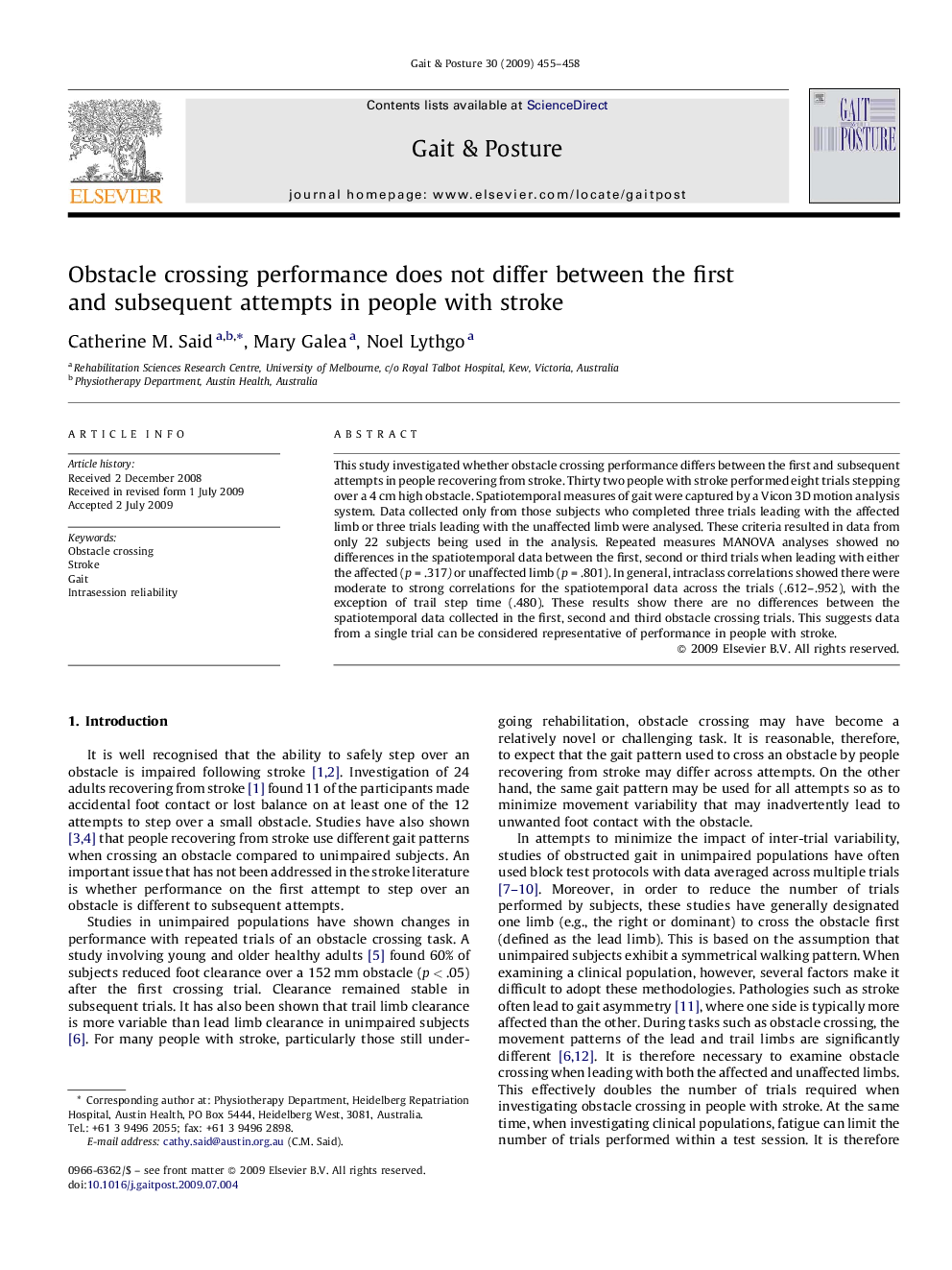| Article ID | Journal | Published Year | Pages | File Type |
|---|---|---|---|---|
| 4056963 | Gait & Posture | 2009 | 4 Pages |
This study investigated whether obstacle crossing performance differs between the first and subsequent attempts in people recovering from stroke. Thirty two people with stroke performed eight trials stepping over a 4 cm high obstacle. Spatiotemporal measures of gait were captured by a Vicon 3D motion analysis system. Data collected only from those subjects who completed three trials leading with the affected limb or three trials leading with the unaffected limb were analysed. These criteria resulted in data from only 22 subjects being used in the analysis. Repeated measures MANOVA analyses showed no differences in the spatiotemporal data between the first, second or third trials when leading with either the affected (p = .317) or unaffected limb (p = .801). In general, intraclass correlations showed there were moderate to strong correlations for the spatiotemporal data across the trials (.612–.952), with the exception of trail step time (.480). These results show there are no differences between the spatiotemporal data collected in the first, second and third obstacle crossing trials. This suggests data from a single trial can be considered representative of performance in people with stroke.
